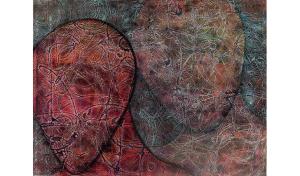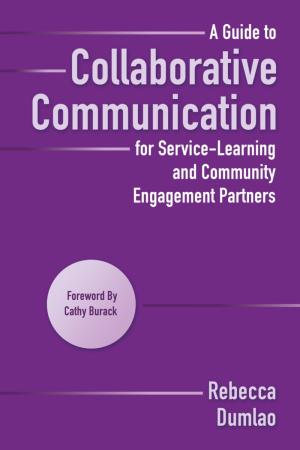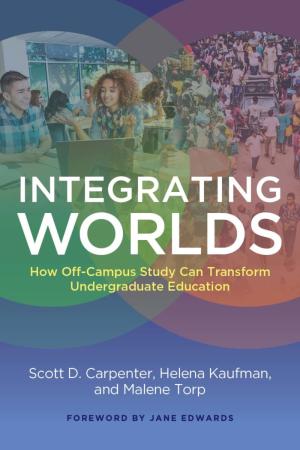Resources
A 2020 course by Steven Weitzman at the University of Pennsylvania asks "What is the value of studying religion in a higher education setting? How does one bridge between a critical approach to religion and the beliefs of one’s students? The course will broach these and other questions through readings and discussions meant to help you think through the challenges of teaching about religion to college students, and will give you opportunities to develop your own approach to them."

Teaching theology in the seminary is challenging. Many students, burning with zeal to do the “real work” of ordained ministry, pastoral care, often cannot immediately perceive theology’s role in that endeavor. Its utility for building community, performing diaconal service, celebrating liturgies, or providing spiritual formation is often not as apparent to them as it is to us. I have found that one way to defuse students’ skepticism toward theology is by early, direct, and repeated emphasis on the relationship between theological imagination and the embodied practice of faith. Once students catch a glimpse of how theological symbols function (thank you, Elizabeth Johnson!) and, conversely, how practices shape theological symbols, they more readily apprehend how preaching, teaching, and living good theology are essential to providing the pastoral care they expect seminary will train them to give. Last July, I participated in the Wabash Center’s Teaching with Digital Media workshop for the express purpose of developing more tools to help students connect the study of theology to the practice of ministry. As part of an exercise during the workshop, I reconceived a paper assignment at the end of the first term of a two-semester introduction to theology sequence I teach annually. I turned it into an outward-facing digital theology project. Having students dip their toes into doing a bit of public theology as the culminating task of a semester of study designed to demonstrate the link between conceptual and practical theologies seemed like it would further my pedagogical goals. The assignment I gave them was to imagine themselves the director of adult formation at a church and to create an original meme (a still image or a GIF) for the formation-program Facebook page of the church. The meme was to communicate the importance of preserving a robust concept of sin in Christian theology and practice. Students had to share the meme as broadly as possible and solicit feedback on it. They then needed to write a brief paper that would (1) explain, in conversation with the relevant course texts, the theological choices made in creating the meme, and (2) report and reflect on how the meme was received and what the student learned from this as a theologian. The results were remarkable. [caption id="" align="aligncenter" width="511"] Used courtesy of Nora Boerner, CDSP M.Div. student[/caption] Students created memes that were sometimes provocative, sometimes humorous, sometimes both. The richest and most sophisticated of them, not surprisingly, were produced by the students whose theological rationales were the most nuanced. What was gratifying about this was that they themselves realized this connection. They were able to grasp how easy it is to communicate theology sloppily and saw that providing a message consonant with the Good News requires a deep understanding of what that central communication is. If one is going to distill the Gospel into capsule form, such as a meme, with as little distortion as possible, solid theology is required. In cases in which viewers received a message different from the intent, students benefitted from a first-hand education in how easy it is to be misunderstood when concepts are not handled with sufficient care, and they could appreciate that this can have unintended negative effects on one’s audience and thus impair the pastoral relationship. [caption id="" align="aligncenter" width="451"] Used courtesy of Sunshine Dulnuan, CDSP MTS student[/caption] Some students were made anxious by the assignment because of lack of familiarity with meme culture or trepidation over engaging in public theological commentary. Confronting both of these anxieties is important for church leaders in training. Effective public communication in the visual and syntactical languages various publics use is crucial for those charged with mission, discipleship, and evangelism (the three foci of Church Divinity School of the Pacific’s program of formation). This may mean learning idioms quite different from one’s default mode of communication, and needing to translate theology well from one into the other. The anxiety this assignment provoked was, to my mind, the one commonly experienced when confronting a developmental challenge, and so it was, in the end, a productive anxiety. [caption id="" align="aligncenter" width="405"] Used courtesy of Joanna Benskin, CDSP M.Div. student[/caption] This media-based assignment contributed nicely to my overall pedagogical objectives. Students were required to produce and disseminate a micro-theology expressive of their developing theological imaginations. They communicated a formational message with a theological foundation they could articulate and justify. They were thus given an opportunity to enter intellectually and affectively (and also tentatively and gently) into the arena of public theological exchange and to grasp how challenging, indispensable, and even, yes, pastoral, the discipline of theology can—and, in the context of these students’ particular vocations, must—be.
A 2019 course by Cheryl A. Kirk-Duggan at Seminary of the Southwest "engages multiple texts, scripture, literature, film, music, socio-political movements, and art to explore the violent system that grounds theological, psycho-socio-economic, and political oppression: white supremacist patriarchal misogyny, and the resulting intergenerational trauma, from a Womanist theological ethics perspective."
Travel Information for Participants Already Accepted into the WorkshopGround Transportation: About a week prior to your travel you will receive an email from Beth Reffett (reffettb@wabash.edu) with airport shuttle information. This email includes the cell phone number of your driver, where to meet, and fellow participants with arrival times. Please print off these instructions and carry them with you.

Journal Issue

One of the most unfortunate practices in instruction is a teacher trying to get “right answers” from students. This is not to say that getting your students to get it right is a bad thing–in fact, it’s very desirable. Usually what happens, however, is that the teacher is engaged in teaching a concept and then pauses to “test” to see if students are getting it. The teacher asks a question intended to solicit a right answer, then is satisfied when one or two students answer correctly. The trap is that in the mind of the teacher a right answer indicates that learning has taken place and the student understands the concept. The truth is that a “right answer” may merely indicate that the learner has learned to mimic the teacher’s explanation—or maybe the learner made a lucky guess! When I was in grade school, I was chosen to be the spokesperson for an exhibit at the annual science fair. My job was to stand in front of a large container of water upon which were two small model boats. One model was intact and floated on the surface, but the other model had a hole in it. When I placed the second model boat on the surface of the water it would soon take on water and sink. I remember that my job was to explain to people why a boat with a hole in its hull sinks. I was chosen for the job because apparently I gave the "right" explanation well. But I have to confess that I was well aware that I didn’t really understand what it was that I was explaining! Even as I was giving the explanation to enraptured groups of students and teachers, I was keenly aware that I didn’t comprehend what I was talking about. I’d learned to mimic my science teacher’s explanation, but I didn’t understand it. Even when a learner gives a right answer, the skilled teacher will use the opportunity to follow up on how the learner arrived at the correct answer. Effective teachers assess understanding of the concepts being learned, not just test for “right answers.” In other words, effective teachers do not just focus on what a student says in an answer, but also assesses how a student arrived at the answer. One way to help learners acquire deeper understanding is to be more intentional in your response to student answers. When responding to a learner’s correct answer, don’t just say, “Right!” or “That’s correct!” Respond in a way that will both enforce the correct answer and help teach the group about why an answer is correct and how to arrive at the right answer. Teacher responses that include information about why the learner’s answer is correct, such as rephrasing the response to emphasize factors that make the answer correct, or the steps or methods used to get the correct answer, are helpful to other learners who are in the process of learning the reasoning behind why something is so, or who are trying to figure out the steps for arriving at an accurate answer to the question being posed. You can help students move beyond mimicking a right answer and toward comprehension by: - Amplifying the student’s response - Restating, modifying, or rephrasing the learner’s response and redirect for further discussion - Asking the student to explain how he or she arrived at the answer - Asking the student to provide an example or a corollary - Probing for further discussion. By the way, can you explain why a boat sinks?
https://www.wabashcenter.wabash.edu/journal/

This book focuses on partnerships at the most basic level of interaction – between two people as they work toward common goals. Interpersonal dynamics described in this book are intended to guide formal and institutional relationships between members of a community or community organization on the one hand and representatives from campus on the other. Collaborative communication principles and practices shared can form a foundation for individuals to build flexible, lasting relationships that will weather most challenges and sustain the larger partnerships of their respective organizations. This book offers a conceptual framework of collaborative communication to build and sustain partnerships, recognizing that relationships change over time as the people involved and their circumstances evolve. Collaborative communication uses a repertoire of knowledge and skills that allow partners to make choices that fit their situation or context and to work through differences and challenges as they occur, to include managing conflict and navigating cultural differences. It further takes into account the different means of communication, whether face-to-face, using e-mail, text messaging, or social media. Readers will appreciate the numerous real world examples that illustrate and bring its key concepts to life. This book is addressed to partners at all levels focused on community engagement and service-learning. It is intended for preparing college students to work more effectively in the community, as well as for workshops for community and campus members who work with service-learning students. It can equally be used in leadership workshops in academic and community settings. Scholars, students, or community members involved in community engaged research will also find useable ideas for their work. The appendices offer an annotated bibliography of useful resources and provide readers with a repertoire of activities for building a collaborative communication repertoire. (From the Publisher)

What if our students learn the most when they’re far from campus? Integrating Worlds demonstrates how high-quality off-campus study epitomizes integrative learning, both supporting and enhancing the entire undergraduate experience. While off-campus study (both study abroad or study away) occupies a marginal position on most campuses, it has the almost unique capacity to bring together a high concentration of high-impact educational practices. When we combine global learning with collaborative work, shared intellectual pursuits, learning communities, and more, these practices reinforce each other, exerting a multiplier effect that can potentially result in the most intense learning experience our students will have. It can energize and inspire them for the work they will continue to undertake on their home campus. It thus becomes crucial for us to identify or design high-quality programs that will achieve these goals. Moreover, we need to reimagine off-campus study as an integrated portion of the undergraduate arc—one that begins well before our students depart and continues long after they return. In this way, we help them understand the interconnectedness not only of the world, but also of their own education. At the same time, the authors recognize material constraints and educational imperatives. Off-campus study costs money; its complexity makes it difficult to assess; it overlaps increasingly with internships and civic engagement; and by its nature, it is more subject to external forces than the on-campus experience. In careful, practical ways Integrating Worlds advances suggestions for dealing with these issues. This book urges educators to go beyond the episodic ways we currently link on-campus curricula to off-campus experience. While of interest to specialists in international or intercultural education, it speaks most directly to faculty, deans and provosts—many of whom may have little (or dated) experience of study abroad and who thus feel unprepared to address this issue of pressing importance. As our disciplines and institutions face the complexities of a rapidly changing world, this book seeks to fuel the necessary conversations. (From the Publisher)